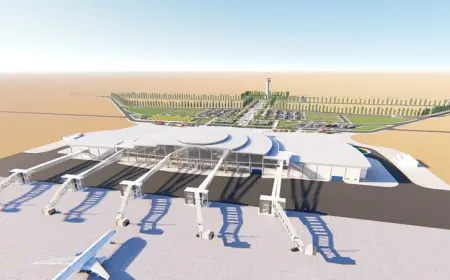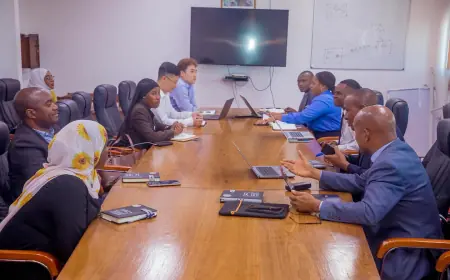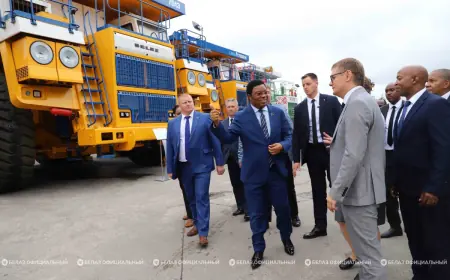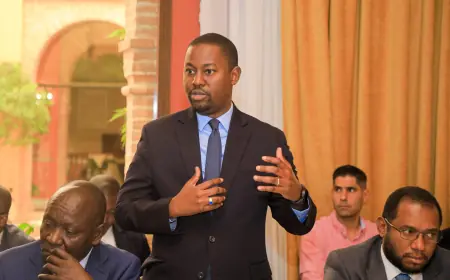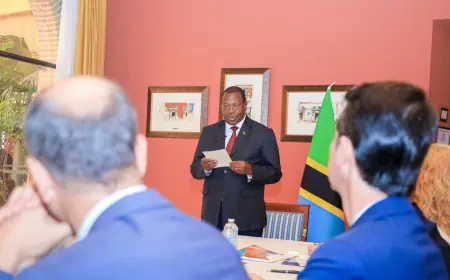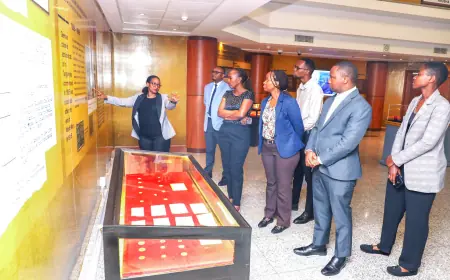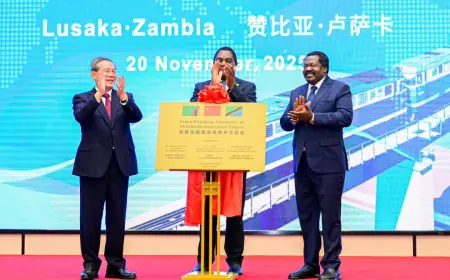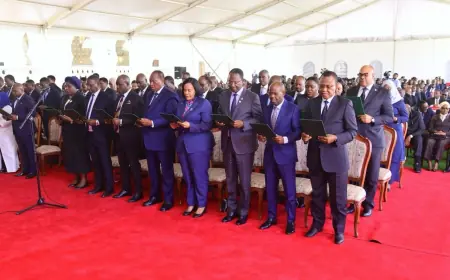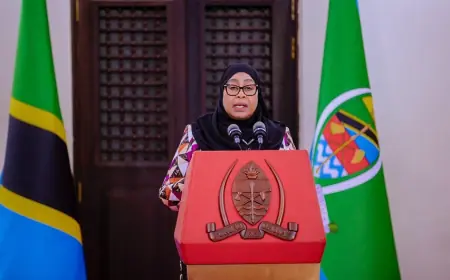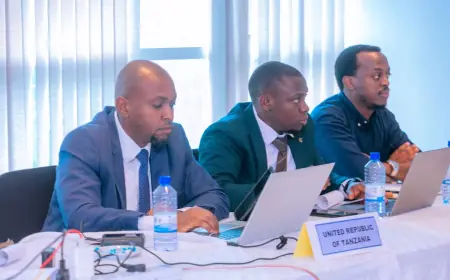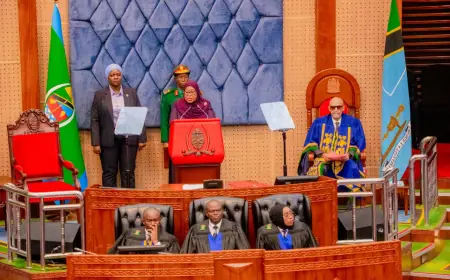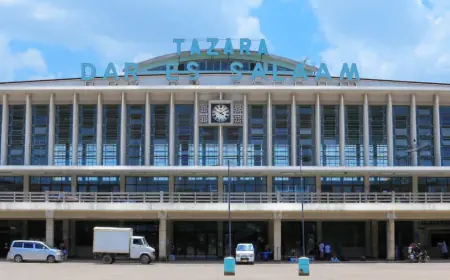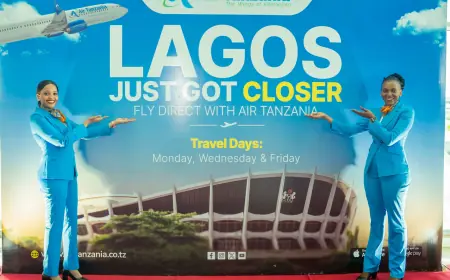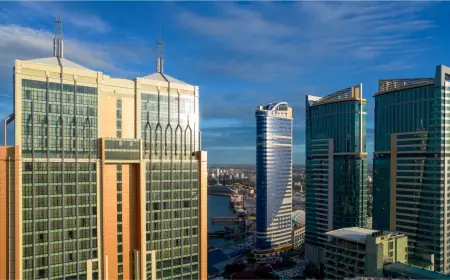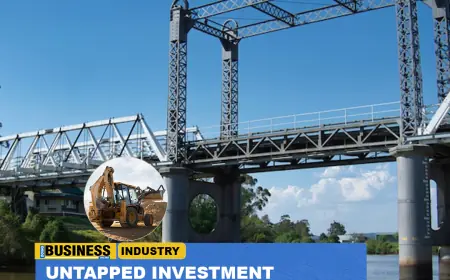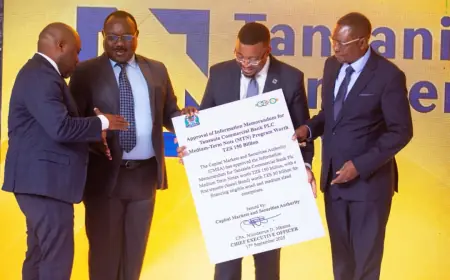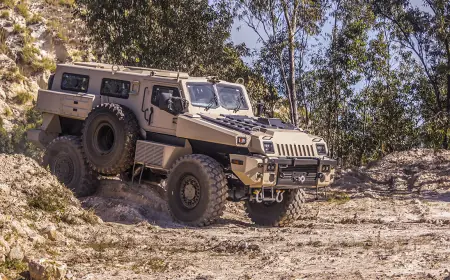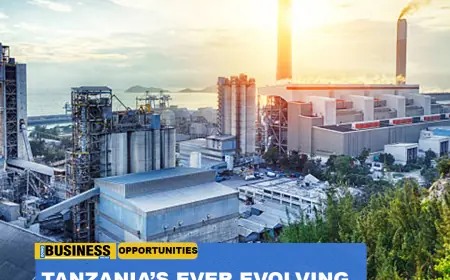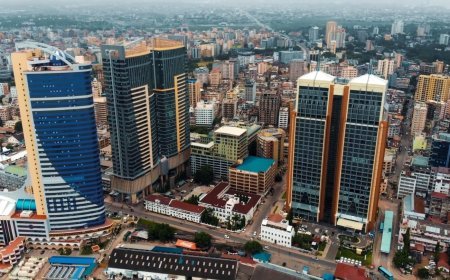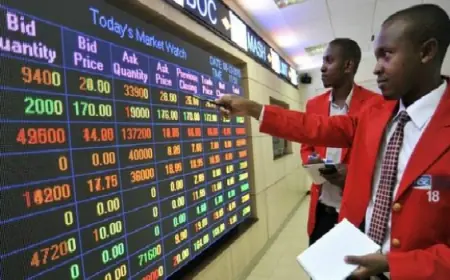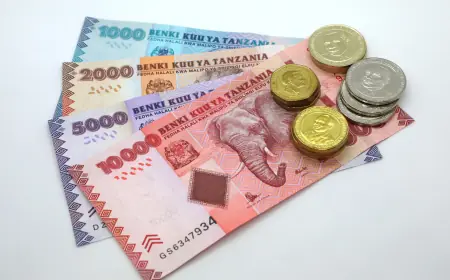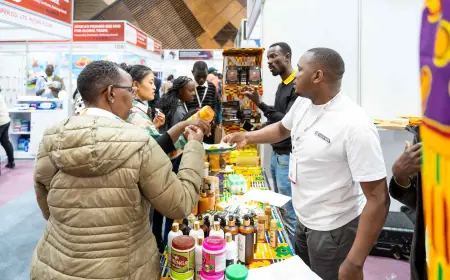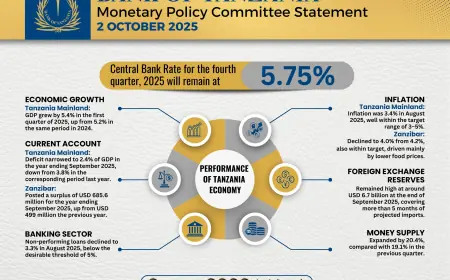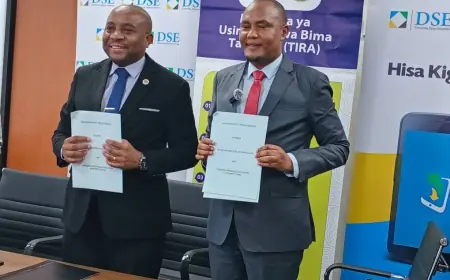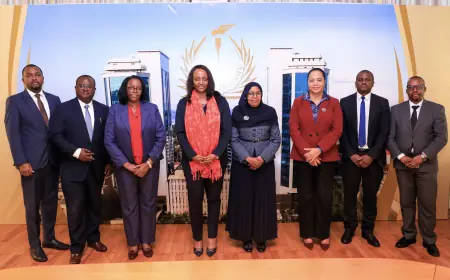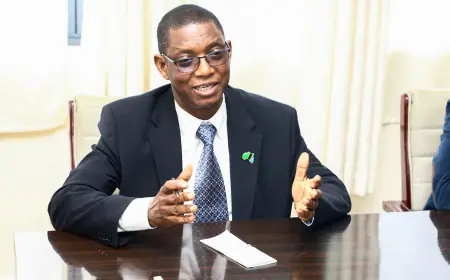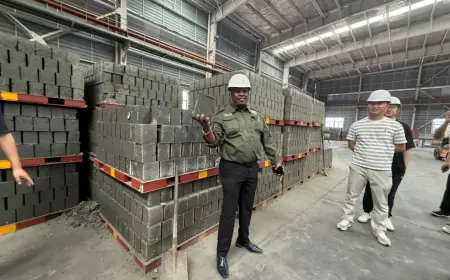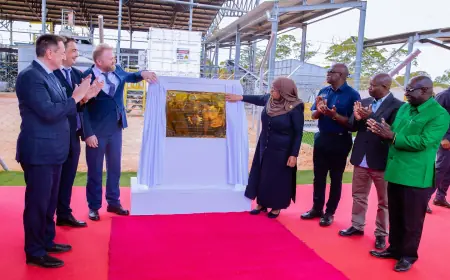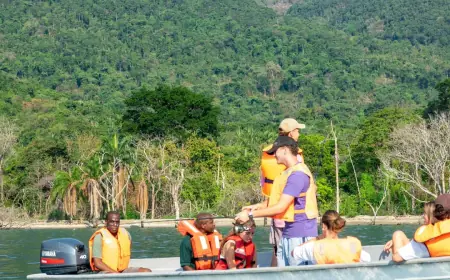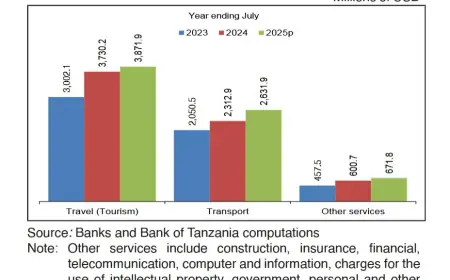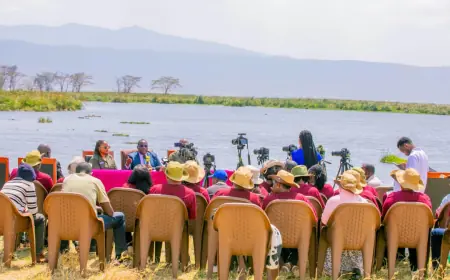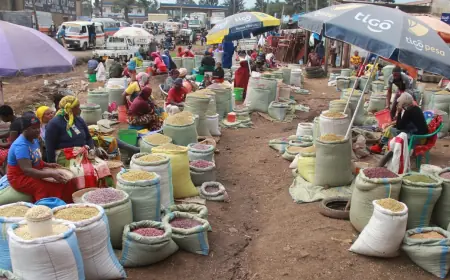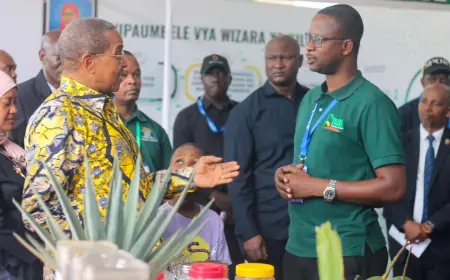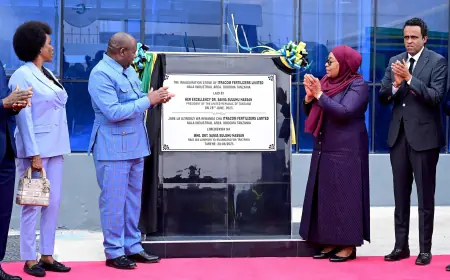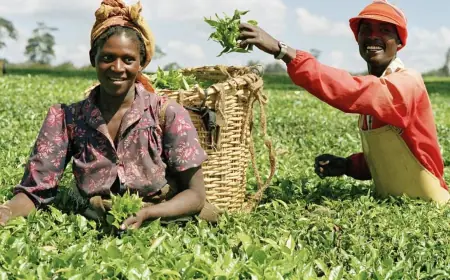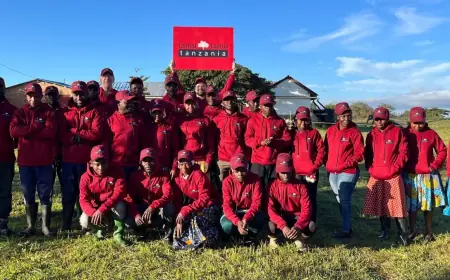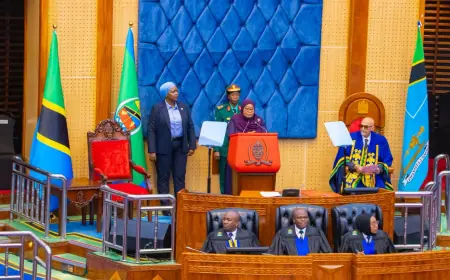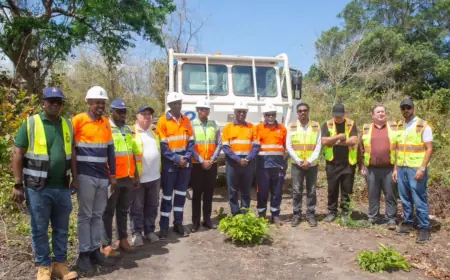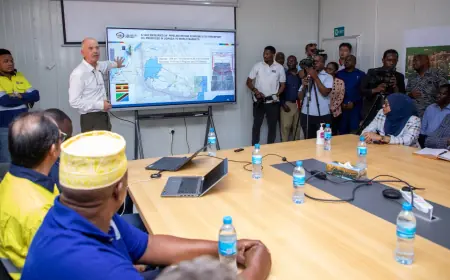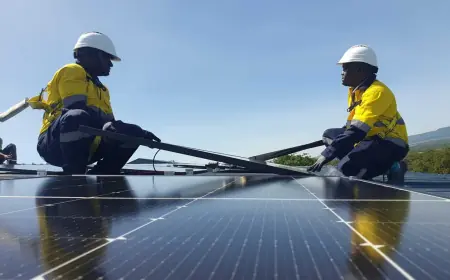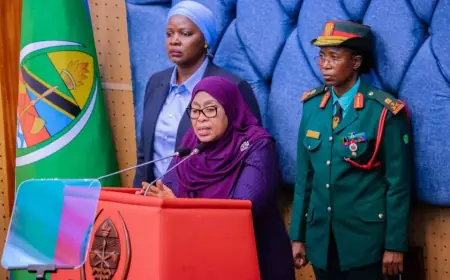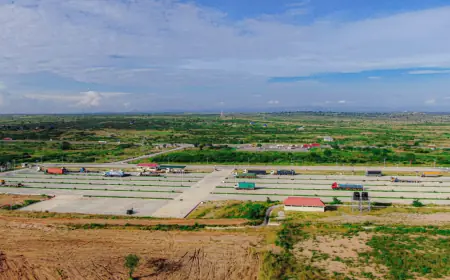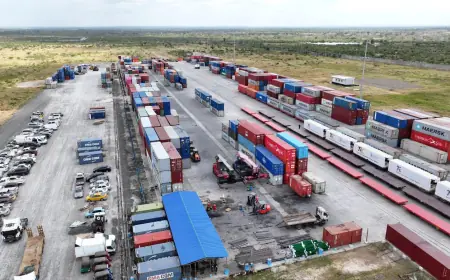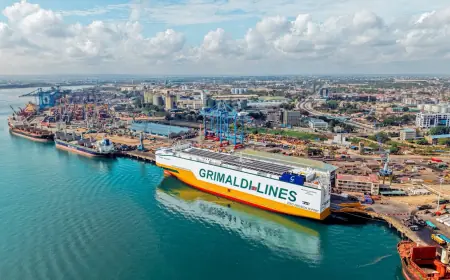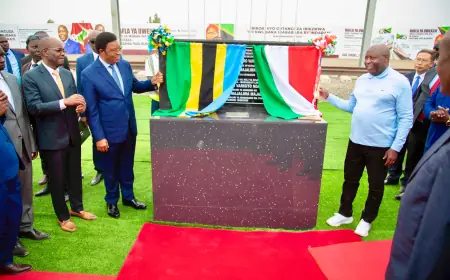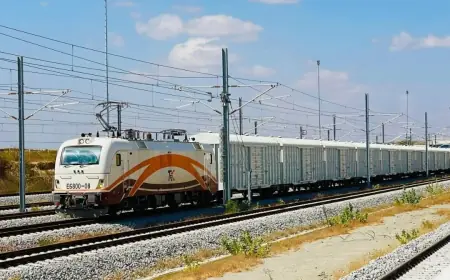TANZANIA’S STANDARD GAUGE RAILWAY : A GAME CHANGER FOR ECONOMIC DEVELOPMENT
When the first Standard Gauge Railway (SGR) passenger train left Dar es Salaam for Dodoma in August 2024, it began a new era in Tanzania’s transportation sector. For years, Tanzania relied heavily on road transport, but the launch of the SGR introduced a faster, more efficient, and more environmentally friendly alternative.
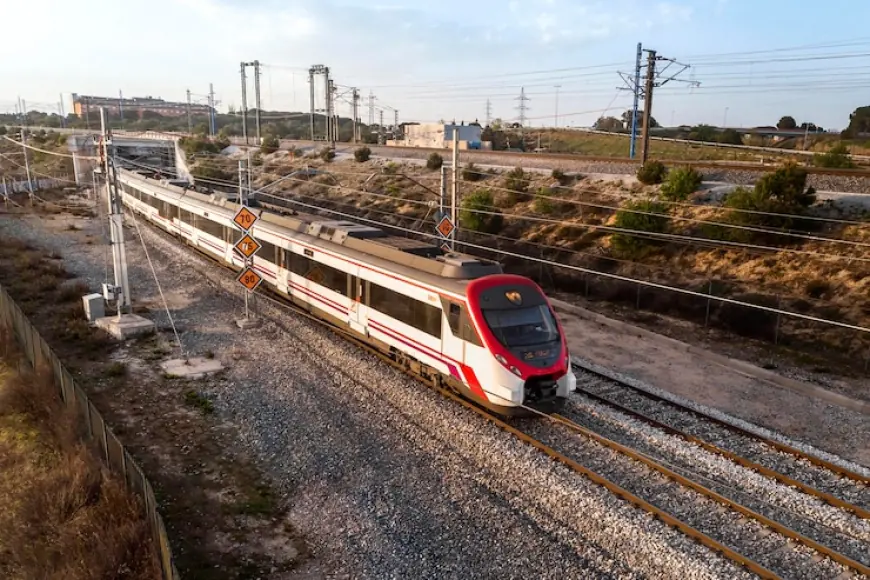
Just months after its introduction, the impact of the railway is already evident, with over 2.1 million passengers transported as of March 2025 and major preparations underway to launch cargo train services by June 2025.
The Tanzanian government has been steadfast in its commitment to SGR development, with top officials emphasizing its impact. Minister of Transport, Professor Makame Mbarawa, also highlighted the government’s dedication, saying, “This railway is
a testament to our vision of a self- reliant Tanzania. We are investing
in infrastructure that will last for generations and create economic opportunities.”
The Director General of Tanzania Railways Corporation (TRC), Masanja Kadogosa, stated, “SGR is not just about transport; it’s a game-changer in economic growth, trade, and connectivity. The fact that it is locally managed ensures that Tanzanians benefit directly from the investment.”
Revolutionizing Passenger Transport
The 2024 launch of the Dar es
Salaam to Dodoma passenger service significantly reduced travel times between the two cities, cutting what was once a nine-hour journey to
just three and a half hours. The new service quickly gained popularity,
with more than 645,000 passengers transported within the first two months. By November 2024, the number had exceeded one million, and by March 2025, the Tanzania Railways Corporation (TRC) reported that 2.1 million passengers had used the SGR.
With comfortable seating, air- conditioned coaches, and modern safety features, the SGR provides
an attractive alternative to buses, which are often affected by road congestion and accidents. The ticket pricing is also competitive, making the train accessible to a broad range of passengers, including daily commuters, business travelers, and tourists. According to TRC projections, passenger numbers are expected to reach six million in the 2025/2026 financial year.
The SGR has earned praise from various individuals and organizations, both domestically and internationally. One notable endorsement came
from former US Ambassador to Tanzania, Michael Battle, who shared his experience on social media after taking the train from Dar es Salaam to Dodoma. He stated:
“I have taken trains on four continents and am proud to say that Tanzania provides an exceptional train experience. The train left the station precisely on time, the ride was comfortable, and the hospitality and professionalism of the staff was superb.”
Beyond diplomatic recognition,
the SGR has also gained widespread attention from social media influencers outside Tanzania. Numerous
YouTube videos have been created
by international travel bloggers and railway enthusiasts praising the efficiency, comfort, and modernity of Tanzania’s SGR. These influencers have shared their positive experiences with millions of viewers worldwide, further solidifying the railway’s reputation as a top-tier transport system in Africa.
Bringing Regions Closer to Dar es Salaam
The introduction of the SGR has significantly reduced travel times and brought key regions closer to Dar es Salaam. Previously, a bus journey
from Dar es Salaam to Dodoma took up to nine hours, but with the SGR, passengers can now reach Dodoma in just three hours. Similarly, travelers heading to Iringa previously spent
ten hours on the road, but with the SGR, they can reach Dodoma in three hours and then take a two-hour bus ride to Iringa, effectively reducing total travel time to five hours and saving five hours in the process. This improved connectivity has enhanced convenience for travelers and boosted economic activities between these regions.
As the number of passengers continues to grow, there is a rising demand for TRC to introduce seasonal tickets, particularly for frequent travelers. Implementing a subscription- based ticketing system could provide financial relief for daily commuters and long-distance travelers, ensuring
a steady customer base and fostering greater convenience. This would be particularly beneficial for students, businesspeople, and civil servants who regularly use the railway for work or education.
Economic Impact and Revenue Growth
The success of the passenger service has translated into strong financial performance. Between June and November 2024, TRC collected approximately 30 billion Tanzanian Shillings (TZS) in revenue from passenger operations alone. This financial boost has not only helped sustain railway operations but has also contributed to government efforts to expand the SGR network to other regions.
The railway has also driven business growth along the corridor. Restaurants, hotels, and retail businesses near SGR stations have reported increased customer traffic, demonstrating the railway’s role in stimulating local economies. The influx of passengers has also boosted employment opportunities, with TRC hiring more staff to handle the growing demand for services.
Cargo Train Services: A Game Changer for Trade
While passenger trains have dominated the headlines, Tanzania’s SGR is also set to revolutionize freight transport.
In December 2024, TRC received a shipment of 264 cargo wagons from China, signaling a major step towards the launch of cargo services. The newly acquired wagons include 200 designed for container transport and 64 for loose cargo. This capacity expansion will allow businesses to transport goods faster and more efficiently than ever before.
Following the arrival of the wagons, TRC conducted extensive trial runs to test the cargo trains’ efficiency and ensure seamless operations. These tests included running loaded and unloaded wagons between key economic hubs like Dar es Salaam, Morogoro, and Dodoma. With the success of these trials, TRC has announced that full-scale cargo train services will commence in June 2025.
The cargo service is expected to significantly reduce logistics costs for businesses by providing a more affordable and reliable alternative to road transport. This is particularly
important for Tanzania’s agricultural and manufacturing sectors, which rely heavily on the timely transportation of goods. Additionally, the cargo service will alleviate congestion at Tanzania’s ports, improving efficiency in international trade.
Recognizing the importance of private sector involvement, TRC has also invited private operators to participate in train operations. This move aims to enhance efficiency, increase cargo transport capacity,
and promote competition, ultimately benefiting businesses that rely on rail logistics. Private sector participation is expected to further boost innovation and service quality in Tanzania’s railway network.
Boosting Export Potential
The SGR is set to play a crucial role in boosting Tanzania’s export potential by facilitating the efficient transportation of cargo to key domestic hubs such as Kigoma and Mwanza, as well as to
neighboring countries. Beyond serving the domestic market, the SGR is also designed to handle export-bound cargo, enhancing the country’s position as a regional trade and logistics hub.
However, one of the key challenges remains whether Tanzania has sufficient export cargo volume to fully utilize the SGR’s capacity. To address this, a strategic approach would be to identify economic zones along the SGR corridor and introduce industries that can generate consistent export goods. By attracting investors to establish large-scale industries—such as manufacturing, agro-processing, and mining of industrial minerals—Tanzania can ensure a steady flow of export commodities that leverage the SGR for transportation.
From Dar es Salaam to Mwanza and Kigoma, there are numerous economic activities with untapped potential.
The focus should be on inviting both local and foreign investors to set up industries that can produce export- grade products. By aligning industrial development with the SGR’s transport capacity, Tanzania can significantly increase its exports, maximize the railway’s utility, and strengthen its trade competitiveness in the region.
Enhancing Regional Connectivity
Beyond domestic benefits, Tanzania’s SGR is designed to strengthen regional trade. In January 2025, Tanzania and Burundi signed a $2.15 billion agreement to construct a 282-kilometer SGR link from Uvinza in Tanzania to Musongati in Burundi. This expansion will facilitate smoother trade between the two nations and provide Burundian businesses with improved access to global markets via Tanzania’s ports.
Tanzania’s long-term SGR vision also includes connecting the railway to Rwanda, Uganda, and the Democratic Republic of the Congo (DRC). These links will enhance Tanzania’s role as a trade hub in East Africa, further boosting economic growth and integration within the region.
Private Sector Participation
he private sector is showing increasing interest in the SGR
project. Six Tanzanian companies— GSM, Bakhresa Group, Mohammed Enterprises Company Limited, Lake Oil, Azania, and Jambo—have expressed their desire to operate some of the SGR services, signaling confidence
in the project’s profitability and efficiency. According to TRC Director General Masanja Kadogosa, Jambo is planning to launch luxury electric train services tailored for tourists, while
the other companies are focusing on cargo transport. This collaboration between the public and private
sectors is expected to bring additional investment and expertise, enhance service quality, and expand SGR’s reach beyond government-operated lines.
Local Ownership and Management
Unlike in other African countries where Chinese firms finance and manage railway projects, Tanzania’s SGR stands out as a locally owned and managed enterprise. This approach ensures greater national control over operations and revenue while fostering local expertise in railway management
SGR Network and Construction progress
1. Dar es Salaam to Mwanza (1,219km) – The Backbone of Tanzania’s SGR Network
This corridor is the primary spine of Tanzania’s SGR network, connecting the commercial capital, Dar es Salaam, with Mwanza, an economic hub on the shores of Lake Victoria. The route passes through major regions, including Morogoro, Dodoma, Singida, and Shinyanga, before reaching Mwanza.
Construction Progress and Phases:
Dar es Salaam–Morogoro (300 km): 98% complete as of May 2023. Passenger services started in June 2024.
Morogoro–Makutupora (422 km): 94% complete as of May 2023. Passenger operations began in July 2024.
Makutupora–Tabora (368 km): Construction was at 7% in May 2023, with completion expected by 2026.
Tabora–Isaka (165 km): This section was 2.4% complete as of mid-2023.
Isaka–Mwanza (341 km): Construction stood at 31% in mid-2023.
Economic and Strategic Importance:
Provides a fast and efficient alternative to road transport for both passengers and cargo.
Facilitates exports and imports via the Port of Dar es Salaam to the Lake Victoria zone, linking Mwanza to Uganda, Rwanda, and Burundi.
Reduces transport costs, boosting trade and industrial growth.
2. Tabora to Kigoma (506 km) – Linking the Interior to the Great Lakes
This route extends from Tabora to Kigoma, a key trade hub on Lake Tanganyika, serving Burundi, the Democratic Republic of Congo (DRC), and Zambia.
Construction Status:
A $2.2 billion contract was signed in December 2022 with China
Civil Engineering Construction Corporation (CCECC) and China Railway Construction Corporation Limited (CRCC).
As of January 2025, the project was 7.12% complete, with an expected completion date of December 2026.
Economic and Strategic Importance:
Enhances regional trade with DRC, Burundi, and Zambia via Kigoma Port.
Provides an efficient route for agricultural and mineral exports from western Tanzania.
Improves connectivity for passengers, reducing travel time from Kigoma to the central region.
3. Uvinza (Tanzania) to Musongati (Burundi) – Strengthening Tanzania- Burundi Trade Relations
This cross-border SGR route, spanning 282 km, will connect Uvinza in Tanzania to Musongati in Burundi, enhancing trade and transport between the two nations.
Construction Status:
On January 29, 2025, Tanzania Railways Corporation (TRC) signed a $2.2 billion contract with China Railway Engineering Group (CREGC) and China Railway Engineering Design and Consulting Group (CREDC).
The project has a 72-month timeline, including a 12-month review period.
Economic and Strategic Importance:
Facilitates the export of nickel and minerals from Burundi’s Musongati mining region.
Strengthens Burundi’s dependence on Tanzania’s transport infrastructure, increasing trade via Dar es Salaam Port.
Reduces transport costs for businesses and enhances regional integration within the East African Community (EAC).
4. Tabora to Mpanda and Karema (317 km) – Expanding Connectivity in Western Tanzania
This railway line extends westward from Tabora to Mpanda and Karema, a developing port town on Lake Tanganyika.
Construction Status:
Feasibility studies and preliminary designs have been completed.
The government is securing funds to begin construction.
Economic and Strategic Importance:
Connects the mineral-rich Katavi Region with national and regional markets.
Provides a direct railway link to Karema Port, opening new trade opportunities via Lake Tanganyika.
Supports tourism growth in Katavi National Park and the western circuit.
Conclusion
Tanzania’s Standard Gauge Railway (SGR) has already made a significant impact
on the country’s transport sector within a short period. By March 2025, over 2.1 million passengers had been transported, demonstrating the railway’s growing importance in providing a reliable, efficient, and affordable means of travel. Revenue collections have exceeded expectations, reflecting strong demand and operational efficiency.
The upcoming launch of cargo train services in June marks another critical milestone in the SGR’s development. This service is expected to enhance Tanzania’s logistics and trade infrastructure by offering businesses a cost-effective alternative to road transport. By reducing transportation costs and transit times, the SGR will facilitate smoother movement of goods across the country and to neighboring markets. Given Tanzania’s strategic location, the railway is set to play a vital role in regional trade, linking the country’s ports to landlocked nations such as Uganda, Rwanda, Burundi, and the Democratic Republic of Congo.
Furthermore, the expansion of the SGR network is expected to unlock numerous economic opportunities. It will promote industrialization by improving access to raw materials and finished goods, stimulate job creation in various sectors, and attract both domestic and foreign investment. The improved connectivity between major cities and trade hubs will also boost tourism and enhance social mobility, allowing more people to access economic opportunities in urban and rural areas.
As Tanzania continues to invest in and expand its SGR network, the railway is poised to become the backbone of the nation’s economic transformation. By fostering national and regional trade, reducing logistics bottlenecks, and supporting sustainable development, the SGR will be instrumental in driving long- term economic growth and enhancing Tanzania’s position as a key transport and trade hub in East Africa.
What's Your Reaction?
 Like
1
Like
1
 Dislike
0
Dislike
0
 Love
0
Love
0
 Funny
0
Funny
0
 Angry
0
Angry
0
 Sad
0
Sad
0
 Wow
0
Wow
0
